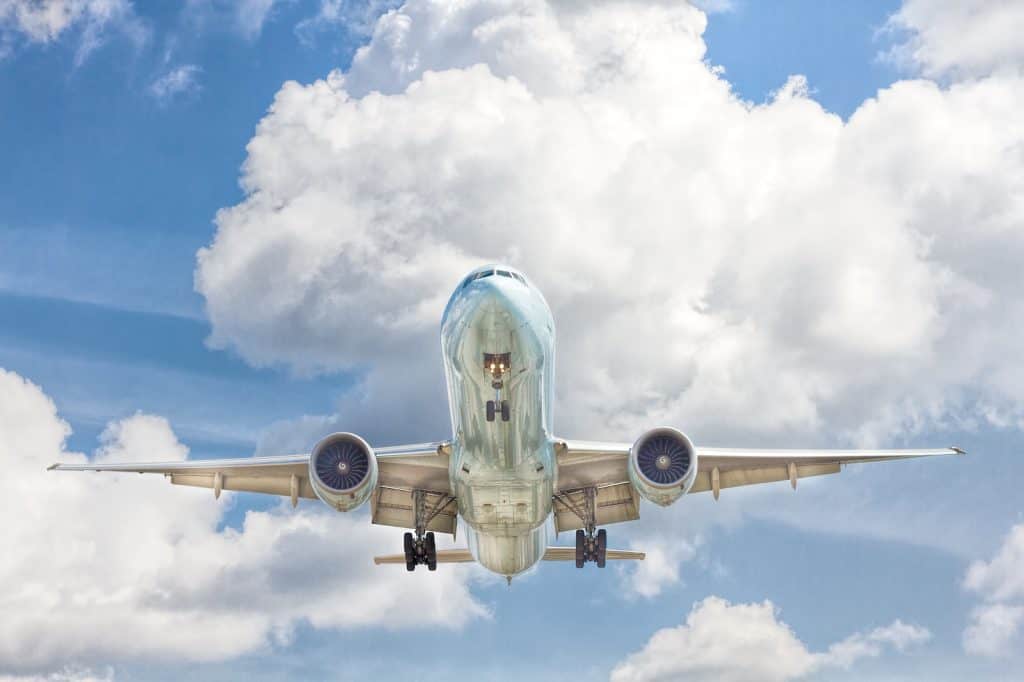Aerospace companies of all sizes must upgrade to meet future challenges. Even though many major airlines have completed their digital transformations, many smaller airlines have yet to do so. The global cloud computing market is predicted to increase at a CAGR of 17.9% between 2021 and 2028, from $250.04 billion in 2021 to $791.48 billion in the year 2028. Parts suppliers and subcontractors regularly fall behind in their digital transformation cloud solutions efforts. The more advanced your business’s technology is, the more collaboration options you’ll have with larger organizations in the future.
Aerospace cloud computing is increasing. Airlines have recently relied more on cloud technology to transmit flight position, speed, and other data to land-based servers via tamper-proof mechanisms. The cutting-edge technology can also be used by aerospace authorities to monitor flight conditions and, if necessary, simulate the circumstances of air crashes. The Accident Notification System is a good example of how the aerospace industry gathers, stores, organizes, analyzes, and exchanges data using the cloud.
A peek into cloud technology:
Cloud technology means storing and managing data on remote servers over the internet and gaining access to it online. Digital transformation solution providers provide computer networks, servers, storage, and applications, among other things. Cloud computing has grown in popularity due to its ease of usage. Cloud computing enables enterprises to stay on the cutting edge of technology without investing heavily in purchasing, maintaining, and servicing equipment.
Why cloud technology for the aerospace industry?
Cloud deployment has become a high priority in the aerospace industry. It addresses issues in the aerospace industry while also allowing for faster reactions to environmental circumstances. Businesses can avoid investing in the entire infrastructure by using cloud computing and only paying for the services they utilize. Instead of building a real prototype, cloud in the aerospace industry allows any airplane component to be easily recreated. Large volumes of data are used frequently in the aviation industry’s operations and administration. Cloud technology can be used to protect highly sensitive data, such as that used by the military and the government.
What are the emerging technologies in the aerospace industry?
Here’s a look at a few of these emerging technologies in the aerospace industry that could change everything for a better future.
- Artificial Intelligence:
The aerospace industry had been testing AI’s capabilities long before the outbreak. AI has improved operations in areas such as aircraft monitoring, face recognition for security, check-in, and more. Nowadays, AI is being used more widely in flight simulators and training protocols. When AI is combined with machine learning, it is able to discover and comprehend patterns and related data, as well as input the results into simulated scenarios.
- Automation & Robotics:
AI-powered autonomous robots are no longer a rare sight in many major airports. These robots aid with luggage carrying, passenger assistance, automated vehicle operation, customer greetings, and other logistical tasks. Robots also undertake hazardous jobs like the xenon flash laser welding procedure for removing surface paint. As the aerospace industry pushes for better production processes, automation and robotic technology will continue to be a source of innovation and growth.
- 5G:
Since aviation is a time-sensitive industry, real-time communication and decision-making are vital. The aerospace industry’s various activities benefit from the high connection speeds and reduced latency associated with 5G technology. In-flight connection is also evolving, allowing passengers and crew members more interactive experiences. The full spectrum of standards that 5G establishes has yet to be seen, and people can’t wait to see it.
- Cloud Computing:
Cloud computing is becoming more widely recognized and utilized in the aerospace industry. Regarding operations, using IoT devices for analytics, integrating the supply chain, and scheduling maintenance to avoid digital disruption in aerospace are all critical considerations. Biometrics, digital twins, and other technologies help airports improve customer experience and security standards. For in-flight demands, new cloud-powered devices and experiences provide more dependable travel for pilots, cabin crew, and passengers. Cloud solutions assist the aerospace industry in creating plans based on cloud-powered data analysis.
How has cloud technology revolutionized the aerospace industry?
- Mobile devices are being used to bring the cloud to the battlefield, assisting in data transmission and possibly gaining access to data from military networks. Moreover, mobile device management is present in product design and production management.
- Virtualized apps will be given higher priority in the plan to reduce IT costs, simplify IT service administration, and speed up service delivery by virtualizing, consolidating, and standardizing legacy applications.
- Savings will be obtained by keeping infrastructure and operations uniform and standardized as feasible and lowering the number of tools and people required to do the same essential duties.
- Some of the most cloud security-conscious organizations are found in the aerospace industry. Multiple levels of security are necessary to secure data, and global-based products and cloud computing deliver the proper level of security for this organization.
What are the benefits of cloud technology in the aerospace industry?
- Cost-Efficient:
Airlines that use cloud services eliminate the need to purchase and maintain on-premise servers and hardware and the IT staff required to administer them. The administrative and maintenance costs are greatly reduced in this manner.
- Reinvent the aerospace industry:
Trade-offs in choosing one technology over another are no longer essential with cloud computing; instead, various technologies and tools can be adopted simultaneously on a pay-per-use basis, eliminating advance purchases of expensive and rarely used software. This allows the airline to give its workers cutting-edge technology anytime and from any location.
- Scalability:
In the cloud, computing power may be scaled up or down in minutes based on actual needs, which fluctuate with quickly changing business demands.
- Fast deployment of Apps & Services:
Airlines can transmit important information in real-time to a reservations app that runs continually on their computers or mobile phones, rather than emailing instructions and changes to ticketing center agents. The need for separate licenses for each workstation is also eliminated with cloud-based infrastructure, saving costs and speeding up the process.
- Redefine the customer engagement:
Airlines can communicate with customers and consumers directly on mobile and social platforms at any time and at a lower cost, thanks to the cloud. This direct connection between the service provider and service user has the potential to grow into a rich and deep relationship that benefits both parties. The passenger can disclose their travel habits and preferences, and the airline can use this information to segment its target audience and better customize its services.
- Increased Productivity:
Airlines that want to provide their ground-based workers greater flexibility can leverage cloud services to assist them in making the shift to remote working without having to plan for or worry about facilities.
Summing Up:
Cloud technology is spreading its wings for various industries to gain benefits that ease their business operations and satisfy customers across the globe. Cloud technology in the aerospace industry is the next game changer that’s grabbing the attention of various organizations to bring more success in less time. Enterprises looking for a good opportunity to stay on top of the market can step forward and explore cloud solutions for their aviation business to edge out the competition.

